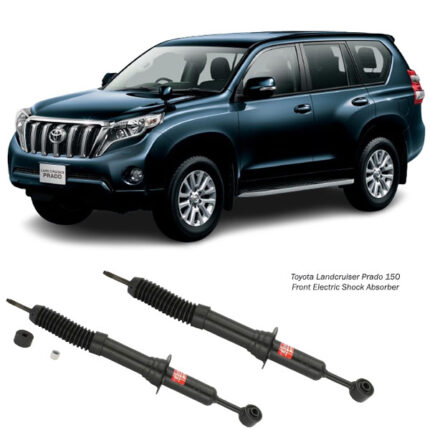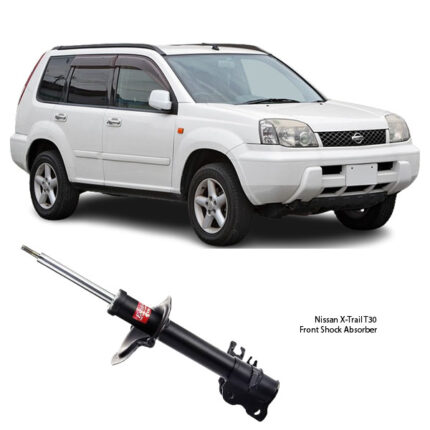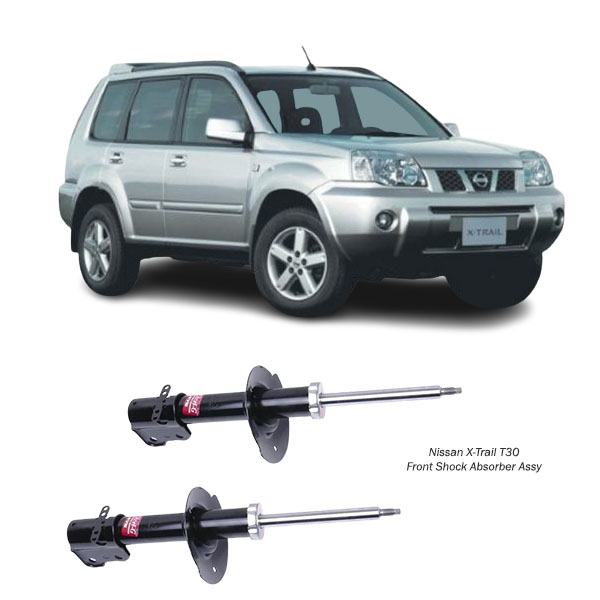Get Nissan X-Trail T30 Front Shock Absorber Assy 334360 in Kenya
The Front Shock Absorber Assembly plays a crucial role in the ride quality, handling, and overall safety of a vehicle. Often overlooked until problems arise, this component is part of the suspension system and is engineered to control the movement of the vehicle’s springs, ensuring that tires remain in contact with the road. Understanding what it is, how it functions, the benefits of having a good one, the risks of using a bad one, the signs of wear, and the proper way to replace it is essential for any driver or technician.
What is a Front Shock Absorber Assembly?
The shock absorber assembly is a complete unit typically comprising the shock absorber (damper), coil spring, upper mount, and sometimes a dust boot and bump stop. Located at the front suspension, this assembly is tasked with absorbing the impact from road irregularities such as potholes, bumps, or uneven surfaces.
It works by converting the kinetic energy from suspension movement into thermal energy, which is then dissipated through hydraulic fluid within the shock. This reduces oscillation in the springs and minimizes the vehicle’s tendency to bounce after hitting a bump.
Modern shock absorber assemblies are often pre-assembled (strut assemblies) for ease of installation. These pre-built units are commonly referred to as “complete strut assemblies” or “loaded struts.”
Function and Importance
The front shock absorber assembly performs several vital functions:
-
Controls Spring Movement: By dampening the natural oscillation of coil springs, shocks ensure a smoother, more stable ride.
-
Maintains Tire Contact: Keeping the front tires in constant contact with the road improves braking, cornering, and acceleration.
-
Enhances Safety: A good shock absorber reduces body roll, dive, and squat, thereby increasing control and preventing accidents.
-
Protects Suspension and Chassis: By absorbing road shocks, it prevents damage to other components such as control arms, bushings, and wheel hubs.
Advantages of a Good Front Shock Absorber Assembly
A high-quality front shock absorber assembly offers a range of benefits:
-
Ride Comfort: Reduces vibrations and road harshness for a more enjoyable driving experience.
-
Improved Handling: Enhances steering response and reduces body sway during turns or lane changes.
-
Enhanced Braking Performance: Minimizes nosedive during braking, shortening stopping distances.
-
Longer Component Life: Reduces strain on suspension and steering components.
-
Consistent Tire Wear: Helps maintain proper tire contact and alignment, reducing uneven wear patterns.
Disadvantages of a Worn or Bad Front Shock Absorber
Operating a vehicle with damaged or worn-out shock absorbers can lead to serious performance and safety issues:
-
Reduced Stability: Increases body roll and pitch, especially at higher speeds or during emergency maneuvers.
-
Poor Braking Efficiency: Leads to extended stopping distances and increased risk in wet or slippery conditions.
-
Tire Damage: Can cause scalloped or cupped tire wear, leading to early tire replacement.
-
Suspension Wear: Increases stress on ball joints, bushings, and other suspension parts.
-
Uncomfortable Ride: Every bump or pothole is transferred more aggressively to the cabin, making the ride rough and unpleasant.
Common Signs of a Worn Front Shock Absorber Assembly
Knowing when to replace your shock absorber assembly is critical. Here are signs to look out for:
-
Nose Dives When Braking: The front of the car sharply dips forward when you hit the brakes.
-
Excessive Bouncing: After hitting a bump, the car continues to bounce instead of settling immediately.
-
Fluid Leaks: Visible oil or hydraulic fluid leaking from the shock absorber casing.
-
Uneven Tire Wear: Tires develop irregular wear patterns or cupping.
-
Steering Instability: Difficulty maintaining control, especially on uneven roads or during cornering.
-
Clunking or Knocking Noises: Sounds from the front suspension area, particularly over bumps.
-
Longer Braking Distances: Noticeable decrease in braking performance.
How to Replace a Front Shock Absorber Assembly
Replacing the front shock absorber assembly requires mechanical skill and the right tools. Here’s a general overview of the process:
Tools and Materials Needed
-
Jack and jack stands
-
Lug wrench
-
Socket and wrench set
-
Breaker bar
-
Torque wrench
-
Penetrating oil
-
New front shock absorber assemblies (left and right)
Steps:
-
Preparation:
-
Park the vehicle on a level surface and engage the parking brake.
-
Loosen the front wheel lug nuts before lifting the vehicle.
-
-
Lift the Vehicle:
-
Use a jack to lift the front of the car and secure it with jack stands.
-
Remove the front wheels for access to the suspension.
-
-
Access the Assembly:
-
Locate the top strut mount bolts under the hood.
-
Use penetrating oil on all bolts to ease removal.
-
-
Unbolt the Old Assembly:
-
Remove the bolts securing the bottom of the shock to the steering knuckle.
-
Carefully unbolt the top mount from the strut tower.
-
-
Remove and Replace:
-
Take out the old shock absorber assembly.
-
Install the new assembly in the reverse order: secure the top mount first, then the bottom bolts.
-
-
Torque to Spec:
-
Use a torque wrench to tighten all bolts to the manufacturer’s specified torque.
-
-
Reinstall Wheels and Lower Vehicle:
-
Reattach the wheels and lower the vehicle to the ground.
-
Torque the lug nuts properly.
-
-
Test Drive:
-
Perform a short test drive to ensure the new shocks are functioning correctly and check for any unusual noises.
-
Note: After replacing suspension components, it’s recommended to get a professional wheel alignment.
Follow us on Facebook for more parts.




